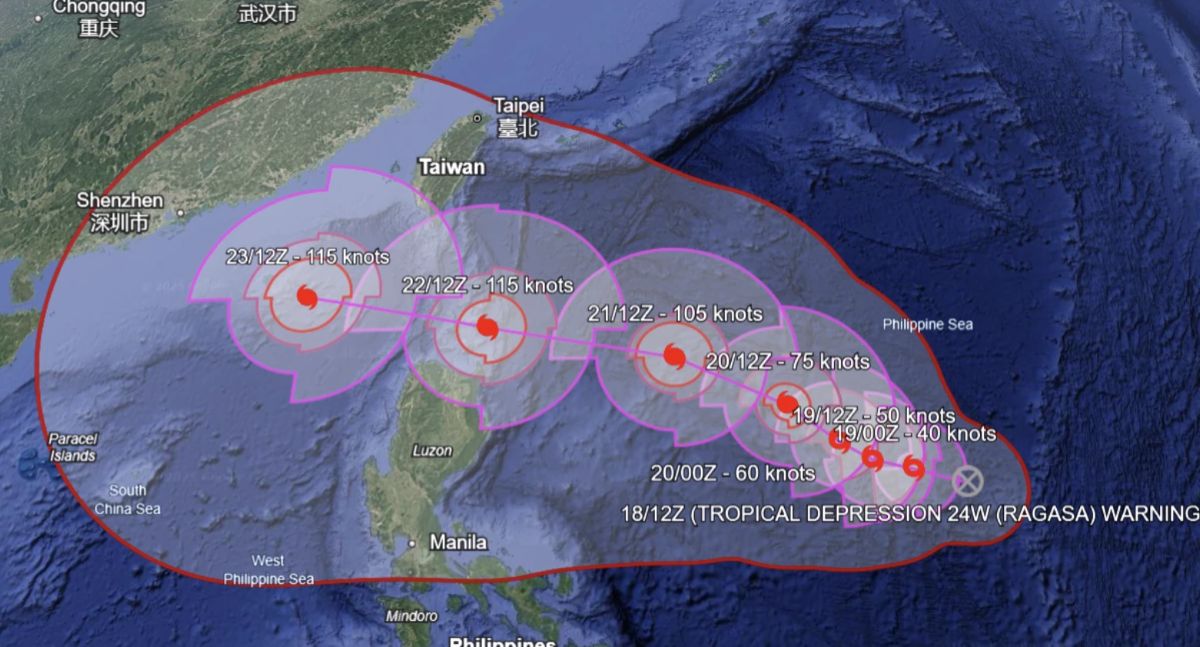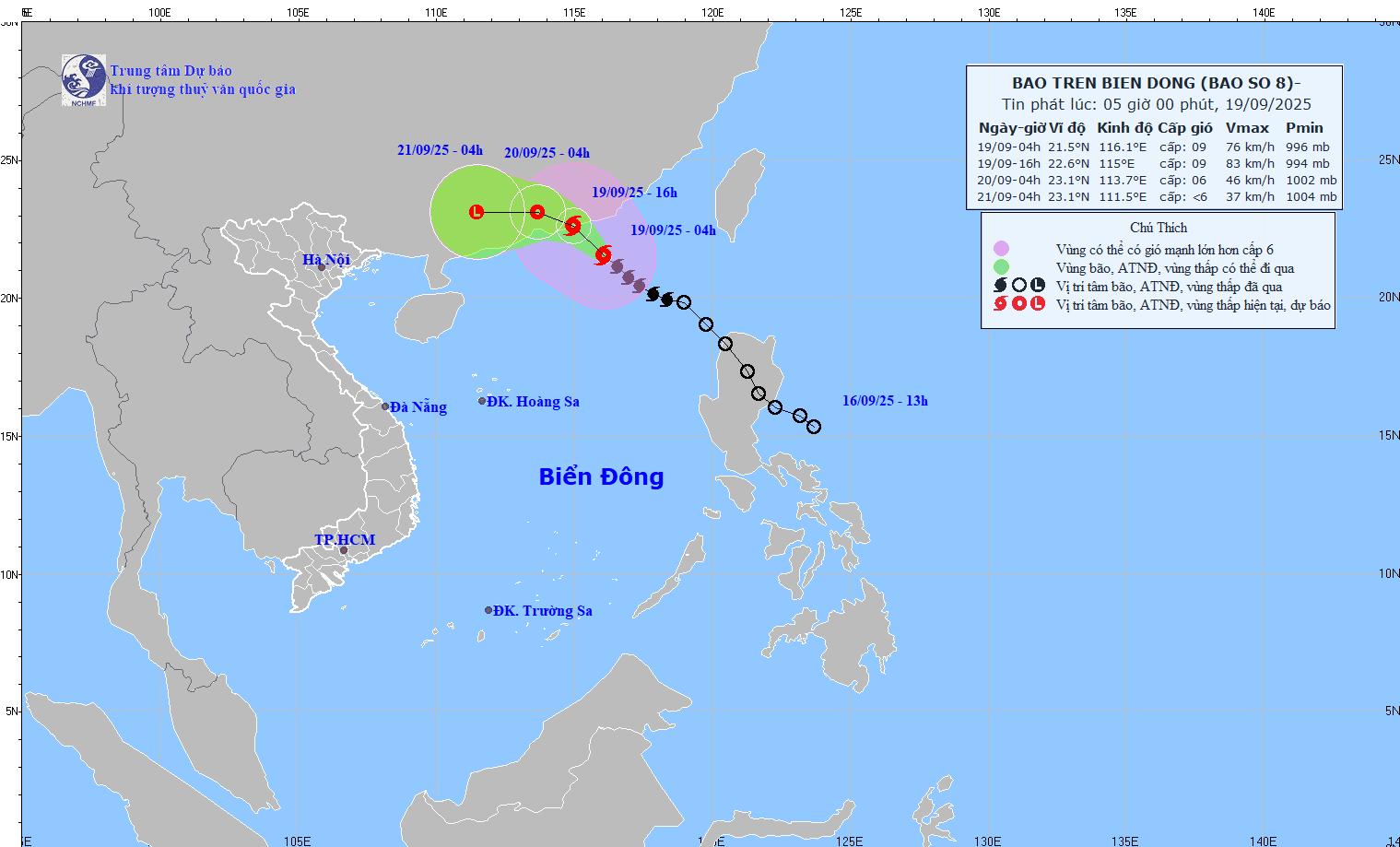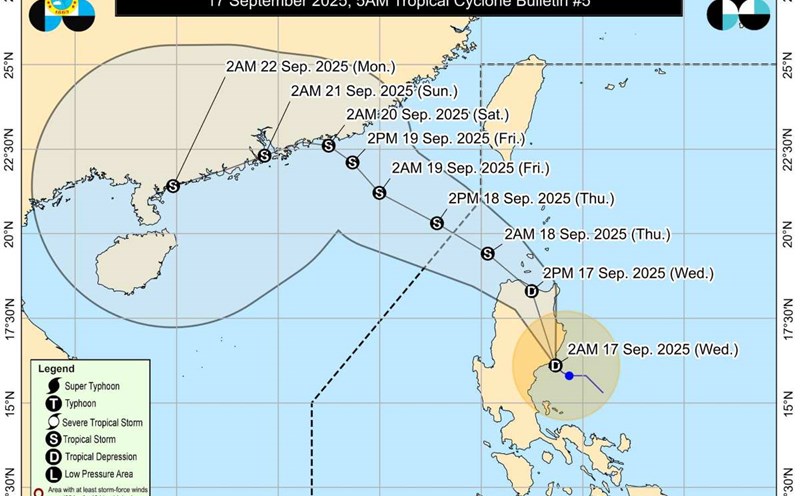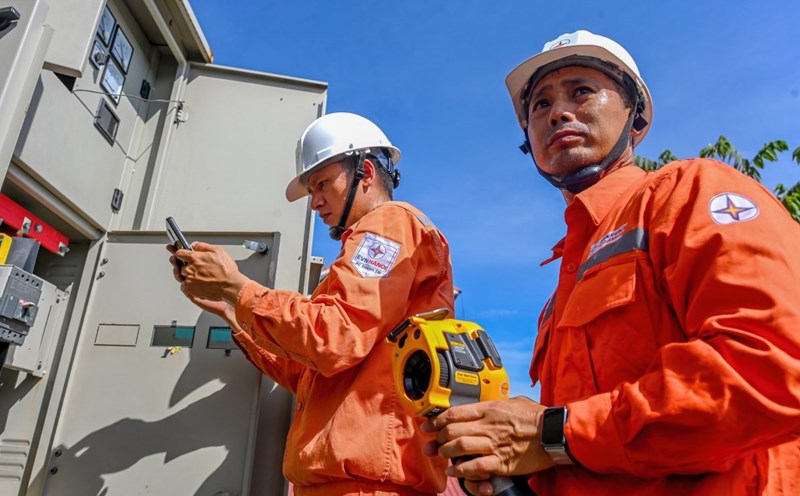The latest storm information from the Philippine Atmospheric, Geophysical and Astronomical Services Administration (PAGASA) said that tropical depression Nando strengthened into a tropical storm with the international name Ragasa at 11pm on September 18 (local time).
At 4:00 a.m. on September 19, the center of the storm was at about 16.1 degrees North latitude; 132.2 degrees East longitude, about 1,075km east of the center of Luzon, with the strongest wind reaching 75 km/h, gusting to 90 km/h, central pressure 998 hPa.
Typhoon Ragasa is moving west-northwest at a speed of 15 km/h. The level 8 gusts have extended to 380km from the center of the storm.
PAGASA said the storm will continue to strengthen in the next 24 hours and may reach typhoon level by the evening of September 20. The risk of Nando becoming the Ninth super typhoon in the South China Sea when sweeping across the northernmost part of Luzon is completely ruled out.
According to the forecast track of potential storm No. 9, the storm will maintain its West-Northwest direction over the Philippine Sea today (September 19), possibly moving in a small loop before changing course to the West later in the day.
The center of the storm is expected to make landfall near or directly in the Babuyan Islands between the evening of September 22 and the morning of September 23, then leave the Philippine forecast area on September 23 and enter the East Sea.
In the next 48 hours, Typhoon Ragasa is unlikely to directly affect the Philippine mainland. However, from September 21-22, widespread heavy rains may begin due to the combination of storm circulation and the Southwest monsoon.
The US Joint Typhoon Warning Center (JTWC) assessed the current environmental conditions as very favorable for the storm's intensification: High sea surface temperatures 29-30°C, low wind shear (19-28 km/h) and strong equatorial discharge systems. These factors give Ragasa the opportunity to accelerate rapidly in the next few days.

Currently, Typhoon Ragasa has not directly impacted the East Sea. However, in the strongest scenario, Typhoon Ragasa could enter the East Sea with great intensity, becoming the ninth super typhoon of this year's typhoon season.
Regarding storm No. 8 in the East Sea, according to the Vietnam National Center for Hydro-Meteorological Forecasting, at 4:00 a.m. on September 19, the center of the storm was at about 21.5 degrees North latitude; 116.1 degrees East longitude, in the northern sea area of the North East Sea, about 240km East Southeast of Hong Kong (China).

The strongest wind near the storm center is level 8-9 (62-88km/h), gusting to level 11. The storm is moving northwest at a speed of 15km/h.
Due to the influence of storm No. 8, the sea area north of the North East Sea will have strong winds of level 6-7, gusting to level 9; The area near the storm's eye will have strong winds of level 8-9, gusting to level 11, waves 3.0-5.0m high. The sea is very rough. Ship operating in the above-mentioned dangerous areas are likely to be affected by thunderstorms, whirlwinds, strong winds, and large waves.









